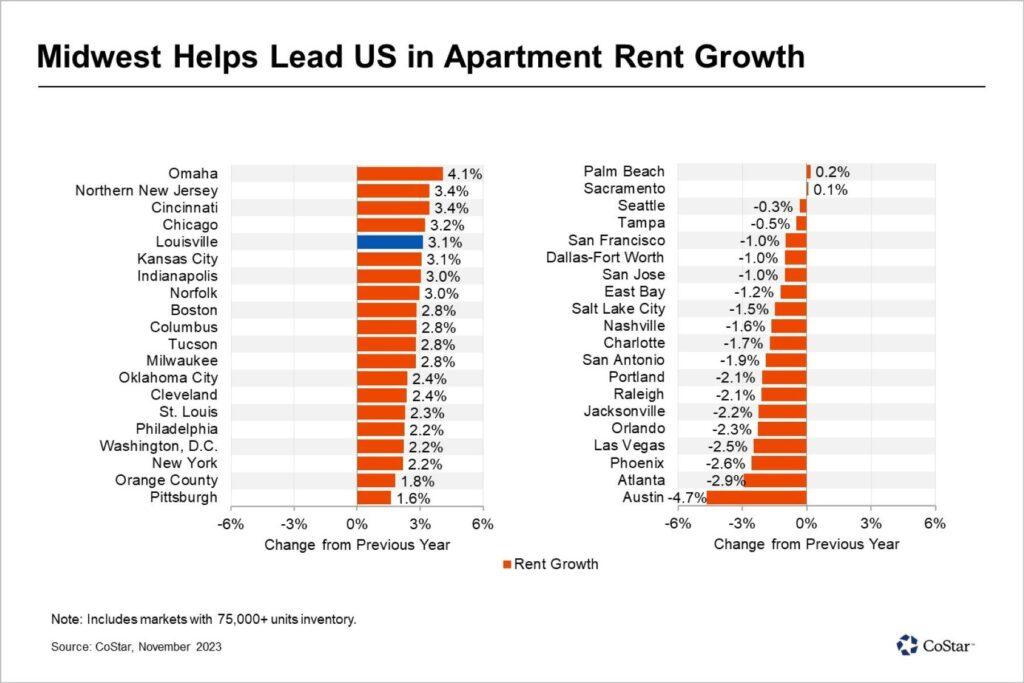The Hidden Surge: How Louisville and Cincinnati Crushed Expectations in Q3 2024 Rent Growth
Midwest Markets Continue to Dominate Rent Growth
Cincinnati has emerged as one of the top-performing rental markets in the country, not just within the Midwest but across the entire United States. Alongside Louisville, Kentucky, the city has posted some of the strongest rent gains in Q3 2024. Cincinnati continues to reinforce its strength in national multifamily performance.
According to CoStar’s latest data, Cincinnati and Louisville recorded rent growth of 3.4% and 3.1%, respectively, placing both cities among the top five markets nationwide for rent increases. This trend underscores the Midwest’s ongoing dominance in multifamily rent appreciation.

Factors Driving Rent Growth in the Midwest
Since early 2023, Midwestern rental markets have consistently led the nation in rent growth thanks to a combination of factors:
- Limited Construction Completions: Unlike Southeast and Southwest metros, where new supply has surged, the Midwest has maintained a controlled pipeline.
- Affordability: Rent levels remain significantly below the national average.
- Balanced Population Growth: Steady, sustainable demand supports long-term price stability.
Louisville and Cincinnati Defy National Trends
Even with new apartment completions reaching record levels in Louisville, the market remains resilient. Over the past 12 months, Louisville added 2,500 new units, exceeding its five-year historical average. Yet, vacancy rates increased only 50 basis points year over year to 6.9%, compared to a 130-basis-point rise at the national level (7.2%).
Demand remains strong, allowing landlords to push rents steadily despite minor softening in occupancy rates. In the past nine months, Louisville absorbed 1,900 newly occupied units, representing 2.1% of total inventory—a rate far above the 1.3% national average. This suggests that even as new inventory enters the market, demand is outpacing supply. Annual demand in Louisville is now at it’s highest level since early 2022.
Key Submarkets Show Above-Average Growth
Specific submarkets within Louisville and Cincinnati are outperforming their respective metro areas. In South Jefferson County, where new completions have been limited, vacancies are 100 basis points below the metro average. These tight market conditions have driven above-average rent increases of 5.8%, showcasing the strength of select high-demand areas.
The Midwest’s Affordability Advantage
Looking ahead, affordability will continue to be a driving force behind sustained rent growth in cities like Cincinnati, Louisville, Columbus, Indianapolis, and Dayton. Despite recent rent increases, asking rents in these cities remain 33% below the national average, per CoStar data.
This pricing gap suggests that the Midwest remains an attractive alternative for renters priced out of expensive coastal and Sunbelt metros. As a result, investors seeking stable, long-term returns may find Midwestern multifamily properties especially compelling in the quarters ahead.
